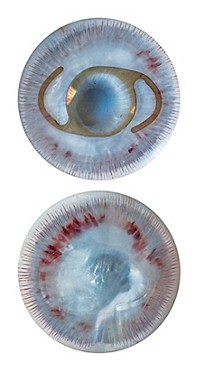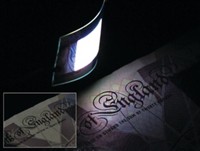Advertisement
Grab your lab coat. Let's get started
Welcome!
Welcome!
Create an account below to get 6 C&EN articles per month, receive newsletters and more - all free.
It seems this is your first time logging in online. Please enter the following information to continue.
As an ACS member you automatically get access to this site. All we need is few more details to create your reading experience.
Not you? Sign in with a different account.
Not you? Sign in with a different account.
ERROR 1
ERROR 1
ERROR 2
ERROR 2
ERROR 2
ERROR 2
ERROR 2
Password and Confirm password must match.
If you have an ACS member number, please enter it here so we can link this account to your membership. (optional)
ERROR 2
ACS values your privacy. By submitting your information, you are gaining access to C&EN and subscribing to our weekly newsletter. We use the information you provide to make your reading experience better, and we will never sell your data to third party members.
Photonics
Waterproof perovskite lasers could probe inside cells
Aluminum oxide coating protects lead halide perovskites from solvents
by Neil Savage, special to C&EN
January 24, 2020

Tiny lasers made from lead halide perovskites are appealing for a wide variety of biochemical applications, including cell tracking and imaging, biosensing, and use as labels or probes. They emit intense, focused light that’s easier to detect than fluorescence. But common solvents, including water, easily break down perovskites, limiting their practical value in wet biological environments. Now a group of researchers has shown they can create a waterproof perovskite laser by adding a protective coating (ACS Nano 2019, DOI: 10.1021/acsnano.9b06870).
To make the laser, Yu Ye and Lun Dai of Peking University, along with their colleagues, first created nanosized plates of cesium lead bromide by depositing thin layers of the material on polydimethylsiloxane using chemical vapor deposition, then transferring the nanoplate to a silicon and silicon oxide substrate. They then used atomic layer deposition to coat the nanoplates, which range in thickness from about 113 to 165 nm, with a 50 nm thick protective layer of aluminum oxide, a material that is easy to work with and doesn’t interfere with light transmission. They submerged the finished product in water and saw that the laser could operate continuously for 1 hr with no decrease in its efficiency. They also kept the laser in water for a month, turning it on periodically, and found no deterioration in its performance. Thinner layers of coating resulted in the laser failing in days or even minutes. Ye says the superior light emission and tiny size of the nanoplates, which are made from single-crystal perovskite, mean it’s now possible to build intracellular probes, such as a nanosized laser whose peak wavelength will shift in response to changes in a cell’s cytoplasm.




Join the conversation
Contact the reporter
Submit a Letter to the Editor for publication
Engage with us on Twitter